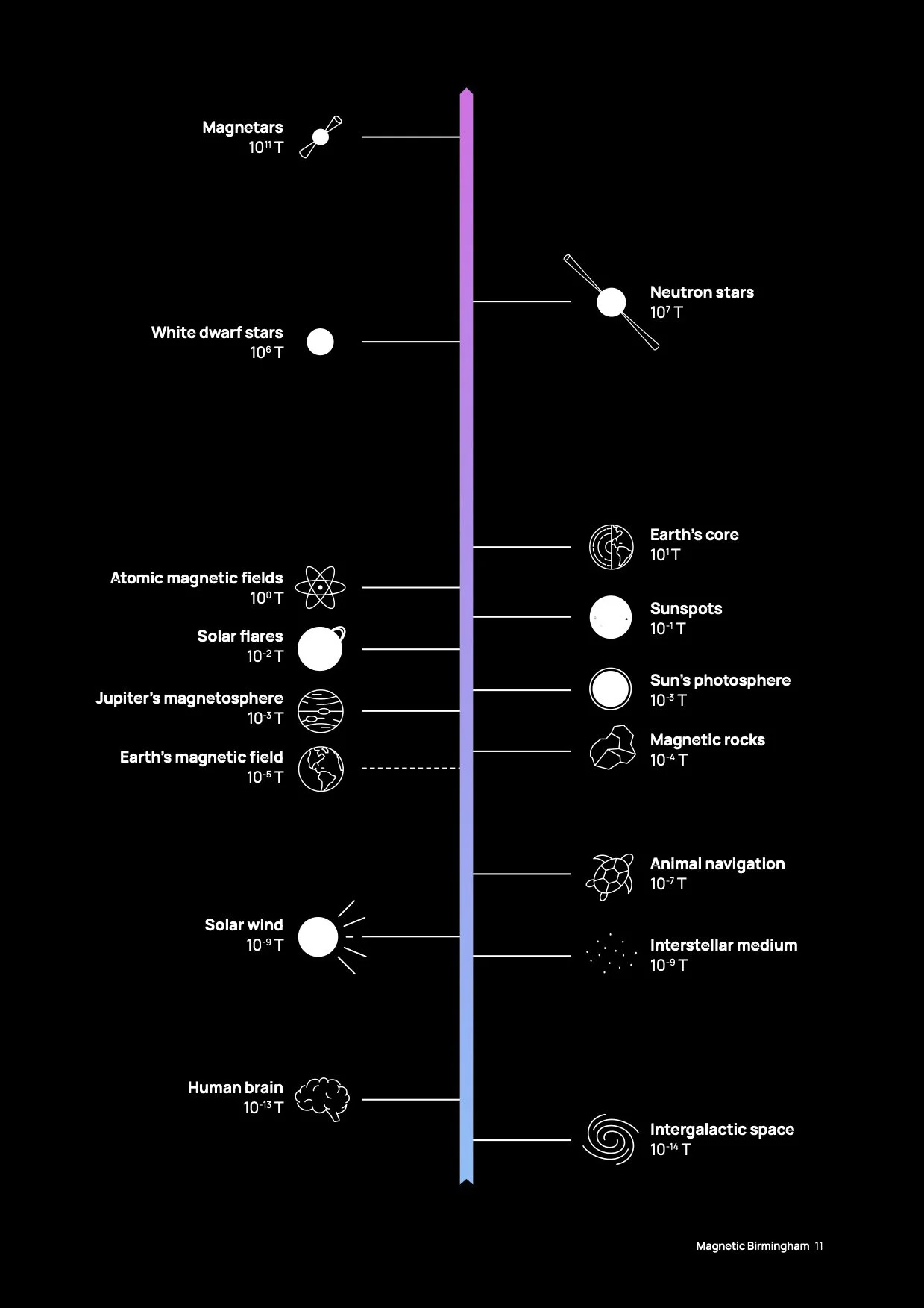Magnetism in nature
As I write this sentence, and as you read it, our brains are processing information via neurons firing in sync. These electrical pulses inevitably generate tiny magnetic fields. When a child leaps gleefully into the mud (less amusing for the parents), some soil bacteria may kick up and scatter — but not before they float pur- posefully, aligned with Earth’s magnetic field. These microbes carry chains of magnetic nan- oparticles that they have evolved to produce, like microscopic compasses.
When that same child points up at a bird in flight, the bird might be navigating the subtle gradients of Earth’s magnetic field — invisible, yet pervasive. And as we gaze upward, we owe thanks to this faint but vital field: high above, it deflects harmful solar wind, shielding our planet and everything on it.
Yet beyond Earth, out in the vast emptiness of space, across galaxies and the voids between them, magnetic fields are everywhere. They thread through the cosmos, persistent and mysterious. We don’t yet know where they come from, or why they are there. But we are learning. And we will find out.
Magnetism is not limited to cosmic scales. All matter, down to the fundamental particles like electrons and nuclei, exhibits magnetic prop- erties. They are, in effect, the tiniest magnetic needles in the Universe. Still, their origins and behaviour remain, in part, unexplained.
Magnetism spans every scale in nature — from the subatomic to the cosmic — and varies immensely in strength and effect. Until we un- derstand its nature fully, can we really claim to understand ourselves, or the Universe at all?
